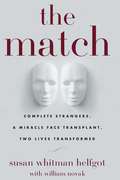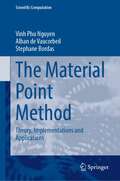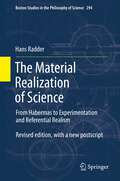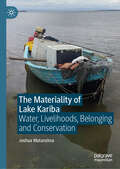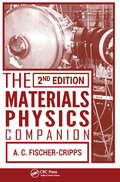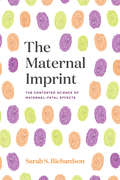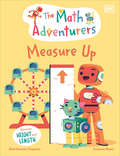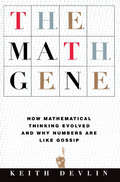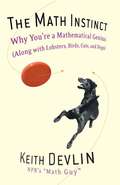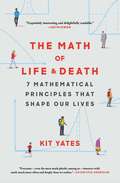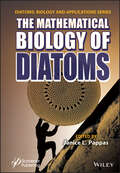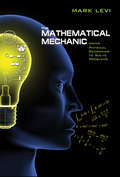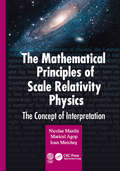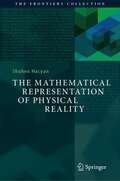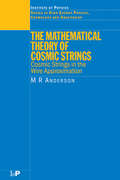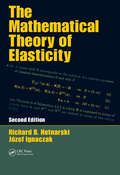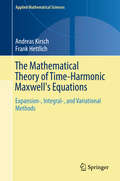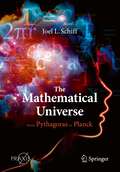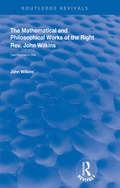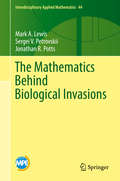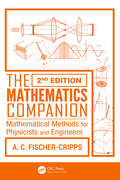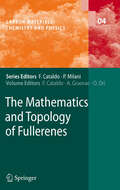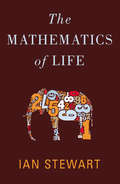- Table View
- List View
The Match
by William Novak Susan Whitman HelfgotJoseph Helfgot, the son of Holocaust survivors, worked his way from a Lower East Side tenement to create a successful Hollywood research company. But his heart was failing. After months of waiting for a heart transplant, he died during the operation. Hours after his death, his wife Susan was asked a shocking question: would she donate her husband's face to a total stranger? The stranger was James Maki, the adopted son of parents who spent part of World War II in an internment camp for Japanese Americans. Rebelling against his stern father, a professor, by enlisting to serve in Vietnam, he returned home a broken man, addicted to drugs. One night he fell facedown onto the electrified third rail of a Boston subway track. A young Czech surgeon who was determined to make a better life on the other side of the Iron Curtain was on call when the ambulance brought Maki to the hospital. Although Dr. Bohdan Pomahac gave him little chance of survival, Maki battled back. He was sober and grateful for a second chance, but he became a recluse, a man without a face. His only hope was a controversial face transplant, and Dr. Pomahac made it happen. In The Match, Susan Whitman Helfgot captures decades of drama and history, taking us from Warsaw to Japan, from New York to Hollywood. Through wars and immigration, poverty and persecution, from a medieval cadaver dissection to a stunning seventeen-hour face transplant, she weaves together the story of people forever intertwined--a triumphant legacy of hope.
The Material Point Method: Theory, Implementations and Applications (Scientific Computation)
by Vinh Phu Nguyen Alban de Vaucorbeil Stephane BordasThis book provides an introduction to the fundamental theory, practical implementation, and core and emerging applications of the material point method (MPM) and its variants. The MPM combines the advantages of both finite element analysis (FEM) and meshless/meshfree methods (MMs) by representing the material by a set of particles overlaid on a background mesh that serves as a computational scratchpad.The book shows how MPM allows a robust, accurate, and efficient simulation of a wide variety of material behaviors without requiring overly complex implementations. MPM and its variants have been shown to be successful in simulating a large number of high deformation and complicated engineering problems such as densification of foam, sea ice dynamics, landslides, and energetic device explosions, to name a few, and have recently found applications in the movie industry. It is hoped that this comprehensive exposition on MPM variants and their applications will not only provide an opportunity to re-examine previous contributions, but also to re-organize them in a coherent fashion and in anticipation of new advances.Sample algorithms for the solutions of benchmark problems are provided online so that researchers and graduate students can modify these algorithms and develop their own solution algorithms for specific problems. The goal of this book is to provide students and researchers with a theoretical and practical knowledge of the material point method to analyze engineering problems, and it may help initiate and promote further in-depth studies on the subjects discussed.
The Material Realization of Science
by Hans RadderThis book develops a conception of science as a multi-dimensional practice, which includes experimental action and production, conceptual-theoretical interpretation, and formal-mathematical work. On this basis, it addresses the topical issue of scientific realism and expounds a detailed, referentially realist account of the natural sciences. This account is shown to be compatible with the frequent occurrence of conceptual discontinuities in the historical development of the sciences. Referential realism exploits several fruitful ideas of Jürgen Habermas, especially his distinction between objectivity and truth; it builds on a in-depth analysis of scientific experiments, including their material realization; and it is developed through an extensive case study in the history and philosophy of quantum mechanics. The new postscript explains how the book relates to several important issues in recent philosophy of science and science studies. "I highly recommend this book. Radder is probably the first philosopher of science to make productive epistemological use of the notion of 'experimental system'. The postscript is most valuable since it connects his work not only to the topical debates in philosophy of science, but also to history of science and science studies." Hans-Jörg Rheinberger, Max Planck Institute for the History of Science, Berlin About the first edition: "The debate on realism has recently become rather stale by repetition, but Radder introduces original insights and has written a lively and well-argued contribution to it. The book is to be recommended also as a clear introduction to the complex of relevant issues." Mary Hesse, University of Cambridge "Radder presents an ingenious approach to the issue of scientific realism and conceptual discontinuity. I believe his idea that conceptual discontinuity presupposes other types of continuity is extremely important." Mark Rowlands, University of Alabama, Tuscaloosa Hans Radder is professor of philosophy of science and technology at VU University Amsterdam. He is the author of In and About the World and The World Observed/The World Conceived. He edited The Philosophy of Scientific Experimentation and The Commodification of Academic Research: Science and the Modern University, and is coeditor of Science Transformed? Debating Claims of an Epochal Break.
The Materiality of Lake Kariba: Water, Livelihoods, Belonging and Conservation
by Joshua MatanzimaThis book is an exploration of one of the world’s largest man-made reservoirs, Lake Kariba, created along the Zambezi River in central Africa. Originally built for electricity generation, as the lake reached its full capacity in 1963 it attracted other socioeconomic activities such as tourism, recreation, fisheries, and conservation. The material properties of the waterscape (including waves, strong winds, water volumes, deities and aquatic species) have shaped these socioeconomic activities since its creation. Community interpretations of the reservoir feature stories of fear, death, income generation, livelihoods, illegal cross-border trade, religion and everyday conflicts with wild animals. Drawing on extended ethnographic research and the author’s personal experience growing up around Lake Kariba, this empirically-rich book provides a nuanced discussion of the ways in which the waterscape shapes people’s lives and livelihoods. Additionally, the book explores the challenges ofsustaining and preserving Lake Kariba's unique ecosystem amidst environmental pressures and competing demands for resources. Readers will gain a nuanced perspective of the significance of the lake, its relationship with neighboring communities, and its evolution over time.
The Materials Physics Companion
by Anthony C. Fischer-CrippsUnderstand the Physics of the Solid StateUpdated and expanded with new topics, The Materials Physics Companion, 2nd Edition puts the physics of the solid state within the reach of students by offering an easy-to-navigate pathway from basic knowledge through to advanced concepts. This edition illustrates how electrical and magnetic properties of mat
The Maternal Imprint: The Contested Science of Maternal-Fetal Effects
by Sarah S. RichardsonLeading gender and science scholar Sarah S. Richardson charts the untold history of the idea that a woman's health and behavior during pregnancy can have long-term effects on her descendants' health and welfare. The idea that a woman may leave a biological trace on her gestating offspring has long been a commonplace folk intuition and a matter of scientific intrigue, but the form of that idea has changed dramatically over time. Beginning with the advent of modern genetics at the turn of the twentieth century, biomedical scientists dismissed any notion that a mother—except in cases of extreme deprivation or injury—could alter her offspring’s traits. Consensus asserted that a child’s fate was set by a combination of its genes and post-birth upbringing. Over the last fifty years, however, this consensus was dismantled, and today, research on the intrauterine environment and its effects on the fetus is emerging as a robust program of study in medicine, public health, psychology, evolutionary biology, and genomics. Collectively, these sciences argue that a woman’s experiences, behaviors, and physiology can have life-altering effects on offspring development. Tracing a genealogy of ideas about heredity and maternal-fetal effects, this book offers a critical analysis of conceptual and ethical issues—in particular, the staggering implications for maternal well-being and reproductive autonomy—provoked by the striking rise of epigenetics and fetal origins science in postgenomic biology today.
The Maternal Imprint: The Contested Science of Maternal-Fetal Effects
by Sarah S. RichardsonLeading gender and science scholar Sarah S. Richardson charts the untold history of the idea that a woman's health and behavior during pregnancy can have long-term effects on her descendants' health and welfare. The idea that a woman may leave a biological trace on her gestating offspring has long been a commonplace folk intuition and a matter of scientific intrigue, but the form of that idea has changed dramatically over time. Beginning with the advent of modern genetics at the turn of the twentieth century, biomedical scientists dismissed any notion that a mother—except in cases of extreme deprivation or injury—could alter her offspring’s traits. Consensus asserted that a child’s fate was set by a combination of its genes and post-birth upbringing. Over the last fifty years, however, this consensus was dismantled, and today, research on the intrauterine environment and its effects on the fetus is emerging as a robust program of study in medicine, public health, psychology, evolutionary biology, and genomics. Collectively, these sciences argue that a woman’s experiences, behaviors, and physiology can have life-altering effects on offspring development. Tracing a genealogy of ideas about heredity and maternal-fetal effects, this book offers a critical analysis of conceptual and ethical issues—in particular, the staggering implications for maternal well-being and reproductive autonomy—provoked by the striking rise of epigenetics and fetal origins science in postgenomic biology today.
The Maternal Imprint: The Contested Science of Maternal-Fetal Effects
by Sarah S. RichardsonLeading gender and science scholar Sarah S. Richardson charts the untold history of the idea that a woman's health and behavior during pregnancy can have long-term effects on her descendants' health and welfare. The idea that a woman may leave a biological trace on her gestating offspring has long been a commonplace folk intuition and a matter of scientific intrigue, but the form of that idea has changed dramatically over time. Beginning with the advent of modern genetics at the turn of the twentieth century, biomedical scientists dismissed any notion that a mother—except in cases of extreme deprivation or injury—could alter her offspring’s traits. Consensus asserted that a child’s fate was set by a combination of its genes and post-birth upbringing. Over the last fifty years, however, this consensus was dismantled, and today, research on the intrauterine environment and its effects on the fetus is emerging as a robust program of study in medicine, public health, psychology, evolutionary biology, and genomics. Collectively, these sciences argue that a woman’s experiences, behaviors, and physiology can have life-altering effects on offspring development. Tracing a genealogy of ideas about heredity and maternal-fetal effects, this book offers a critical analysis of conceptual and ethical issues—in particular, the staggering implications for maternal well-being and reproductive autonomy—provoked by the striking rise of epigenetics and fetal origins science in postgenomic biology today.
The Math Adventurers: Discover Height and Length (The Math Adventurers)
by Sital Gorasia ChapmanJoin two friendly and funny robots, Beep and Boots, as they learn all about measuring and discover that math is everywhere they look.Beep and Boots have an exciting, fun-packed day planned at the amusement park. The pals cannot wait to enjoy all the rides together. But when they check their heights, Boots is not tall enough to go on a lot of the rides. And going to an amusement park is no fun if you can&’t share it with friends. Will Beep be able to come up with a solution so the pair can go on the really high Star Drop ride? Wheeeeee! This fun and educational math book for children features: - A fun and engaging introduction to measurements for children aged 5-7.- Lively illustrations and rhyming text that brings the characters and math topics to life.- Key math topics including shapes, time, measurements, division, and fractions – all essential learning for this age group.- Illustrations that are in a non-gendered color palette, making the traditionally male subject relatable for all genders.- A relatable storyline for young readers, encouraging them to look for math in their homes and environments, and seeing how, often without even knowing it, they use math everyday. The characterful illustrations and rhyming text in the pages of this book bring Beep and Boots to life! Children aged 5–7 will love seeing the adventures the robot duo go on and will learn key mathematical concepts about measuring in a gentle, fun way. A series of questions at the end of the book reinforce learning and encourage kids to look at the math they can see in the world around them. At DK, we believe in the power of discovery. So why stop there?The Math Adventurers series uses everyday scenarios to show how math is all around us, making this difficult subject more accessible. If you enjoyed The Math Adventurers: Measure Up, then you&’ll love The Math Adventurers: A Day at the Zoo, which introduces children to telling the time!
The Math Gene: How Mathematical Thinking Evolved And Why Numbers Are Like Gossip
by Keith DevlinWhy is math so hard? And why, despite this difficulty, are some people so good at it? If there’s some inborn capacity for mathematical thinking--which there must be, otherwise no one could do it --why can’t we all do it well? Keith Devlin has answers to all these difficult questions, and in giving them shows us how mathematical ability evolved, why it’s a part of language ability, and how we can make better use of this innate talent. He also offers a breathtakingly new theory of language development--that language evolved in two stages, and its main purpose was not communication--to show that the ability to think mathematically arose out of the same symbol-manipulating ability that was so crucial to the emergence of true language. Why, then, can’t we do math as well as we can speak? The answer, says Devlin, is that we can and do--we just don’t recognize when we’re using mathematical reasoning.
The Math Instinct: Why You're a Mathematical Genius (Along with Lobsters, Birds, Cats, and Dogs)
by Keith DevlinThere are two kinds of math: the hard kind and the easy kind. The easy kind, practiced by ants, shrimp, Welsh Corgis - and us - is innate. But what innate calculating skills do we humans have? Leaving aside built-in mathematics, such as the visual system, ordinary people do just fine when faced with mathematical tasks in the course of the day. Yet when they are confronted with the same tasks presented as "math," their accuracy often drops. If we have innate mathematical ability, why do we have to teach math and why do most of us find it so hard to learn? Are there tricks or strategies that the ordinary person can do to improve mathematical ability? Can we improve our math skills by learning from dogs, cats, and other creatures that "do math?" The answer to each of these questions is a qualified yes. All these examples of animal math suggest that if we want to do better in the formal kind of math, we should see how it arises from natural mathematics. From NPR's "Math Guy," The Math Instinct is a real celebration of innate math sense and will provide even the most number-phobic readers with confidence in their own mathematical abilities.
The Math of Life and Death: 7 Mathematical Principles That Shape Our Lives
by Kit YatesA brilliant and entertaining mathematician illuminates seven mathematical principles that shape our lives. &“Kit Yates shows how our private and social lives are suffused by mathematics. Ignorance may bring tragedy or farce. This is an exquisitely interesting book. It&’s a deeply serious one too and, for those like me who have little math, it&’s delightfully readable.&” —Ian McEwan, author of Atonement &“Kit Yates is a natural storyteller. Through fascinating stories and examples, he shows how maths is the beating heart of so much of modern life. An exciting new voice in the world of science communication.&” —Marcus du Sautoy, author of The Music of the PrimesFrom birthdays to birth rates to how we perceive the passing of time, mathematical patterns shape our lives. But for those of us who left math behind in high school, the numbers and figures hurled at us as we go about our days can sometimes leave us scratching our heads and feeling as if we&’re fumbling through a mathematical minefield. In this eye-opening and extraordinarily accessible book, mathematician Kit Yates illuminates hidden principles that can help us understand and navigate the chaotic and often opaque surfaces of our world. In The Math of Life and Death, Yates takes us on a fascinating tour of everyday situations and grand-scale applications of mathematical concepts, including exponential growth and decay, optimization, statistics and probability, and number systems. Along the way he reveals the mathematical undersides of controversies over DNA testing, medical screening results, and historical events such as the Chernobyl disaster and the Amanda Knox trial. Readers will finish this book with an enlightened perspective on the news, the law, medicine, and history, and will be better equipped to make personal decisions and solve problems with math in mind, whether it&’s choosing the shortest checkout line at the grocery store or halting the spread of a deadly disease.
The Mathematical Biology of Diatoms (Diatoms: Biology and Applications)
by Janice L. PappasTHE MATHEMATICAL BIOLOGY OF DIATOMS This book contains unique, advanced applications using mathematics, algorithmic techniques, geometric analysis, and other computational methods in diatom research. Historically, diatom research has centered on taxonomy and systematics. While these topics are of the utmost importance, other aspects of this important group of unicells have been increasingly explored in the biological sciences. While mathematical applications are still rare, they are starting take hold and provide an extensive avenue of new diatom research, including applications in multidisciplinary fields. The work contained in this volume is an eclectic mix of analytical studies on diatoms. Mathematical treatment of the various biological disciplines covered in this book range from implicit, but succinct studies to more elaborate detailed computational studies. Topics include growth models, nanostructure, nanoengineering, cell growth, araphid diatoms, valve ontogeny, diatom metabolism, diatom motility, synchronization, diatom kinematics, photonics, biogenic sensors, photochemistry, diatom light response, colony growth, siliceous unicells, algal kinetics, diatom structure, diatom imaging, functional morphology, geometric structure, biomineralization, high-resolution imaging, non-destructive imaging, and 3D structure. This wide-ranging volume provides an introductory as well as an advanced treatment of recent interests in diatom research. The mathematical research in this volume may be applicable to studies of other unicells, biomechanics, biological processes, physio-chemical analyses, or nanoscience.
The Mathematical Mechanic
by Mark LeviEverybody knows that mathematics is indispensable to physics--imagine where we'd be today if Einstein and Newton didn't have the math to back up their ideas. But how many people realize that physics can be used to produce many astonishing and strikingly elegant solutions in mathematics? Mark Levi shows how in this delightful book, treating readers to a host of entertaining problems and mind-bending puzzlers that will amuse and inspire their inner physicist. Levi turns math and physics upside down, revealing how physics can simplify proofs and lead to quicker solutions and new theorems, and how physical solutions can illustrate why results are true in ways lengthy mathematical calculations never can. Did you know it's possible to derive the Pythagorean theorem by spinning a fish tank filled with water? Or that soap film holds the key to determining the cheapest container for a given volume? Or that the line of best fit for a data set can be found using a mechanical contraption made from a rod and springs? Levi demonstrates how to use physical intuition to solve these and other fascinating math problems. More than half the problems can be tackled by anyone with precalculus and basic geometry, while the more challenging problems require some calculus. This one-of-a-kind book explains physics and math concepts where needed, and includes an informative appendix of physical principles. The Mathematical Mechanic will appeal to anyone interested in the little-known connections between mathematics and physics and how both endeavors relate to the world around us.
The Mathematical Principles of Scale Relativity Physics: The Concept of Interpretation
by Ioan Merches Nicolae Mazilu Maricel AgopThe Mathematical Principles of Scale Relativity Physics: The Concept of Interpretation explores and builds upon the principles of Laurent Nottale’s scale relativity. The authors address a variety of problems encountered by researchers studying the dynamics of physical systems. It explores Madelung fluid from a wave mechanics point of view, showing that confinement and asymptotic freedom are the fundamental laws of modern natural philosophy. It then probes Nottale’s scale transition description, offering a sound mathematical principle based on continuous group theory. The book provides a comprehensive overview of the matter to the reader via a generalization of relativity, a theory of colors, and classical electrodynamics. Key Features: Develops the concept of scale relativity interpreted according to its initial definition enticed by the birth of wave and quantum mechanics Provides the fundamental equations necessary for interpretation of matter, describing the ensembles of free particles according to the concepts of confinement and asymptotic freedom Establishes a natural connection between the Newtonian forces and the Planck’s law from the point of view of space and time scale transition: both are expressions of invariance to scale transition The work will be of great interest to graduate students, doctoral candidates, and academic researchers working in mathematics and physics.
The Mathematical Representation of Physical Reality (The Frontiers Collection)
by Shahen HacyanThis book deals with the rise of mathematics in physical sciences, beginning with Galileo and Newton and extending to the present day. The book is divided into two parts. The first part gives a brief history of how mathematics was introduced into physics—despite its "unreasonable effectiveness" as famously pointed out by a distinguished physicist—and the criticisms it received from earlier thinkers. The second part takes a more philosophical approach and is intended to shed some light on that mysterious effectiveness. For this purpose, the author reviews the debate between classical philosophers on the existence of innate ideas that allow us to understand the world and also the philosophically based arguments for and against the use of mathematics in physical sciences. In this context, Schopenhauer’s conceptions of causality and matter are very pertinent, and their validity is revisited in light of modern physics. The final question addressed is whether the effectiveness of mathematics can be explained by its “existence” in an independent platonic realm, as Gödel believed.The book aims at readers interested in the history and philosophy of physics. It is accessible to those with only a very basic (not professional) knowledge of physics.
The Mathematical Theory of Cosmic Strings: Cosmic Strings in the Wire Approximation (Series in High Energy Physics, Cosmology and Gravitation)
by M.R. AndersonThis book is a comprehensive survey of the current state of knowledge about the dynamics and gravitational properties of cosmic strings treated in the idealized classical approximation as line singularities described by the Nambu-Goto action. The author's purpose is to provide a standard reference to all work that has been published since the mid-1
The Mathematical Theory of Elasticity
by Richard B. Hetnarski Jozef IgnaczakThrough its inclusion of specific applications, The Mathematical Theory of Elasticity, Second Edition continues to provide a bridge between the theory and applications of elasticity. It presents classical as well as more recent results, including those obtained by the authors and their colleagues. Revised and improved, this edition incorporates add
The Mathematical Theory of Time-Harmonic Maxwell's Equations
by Andreas Kirsch Frank HettlichThis book gives a concise introduction to the basic techniques needed for the theoretical analysis of the Maxwell Equations, and filters in an elegant way the essential parts, e. g. , concerning the various function spaces needed to rigorously investigate the boundary integral equations and variational equations. The book arose from lectures taught by the authors over many years and can be helpful in designing graduate courses for mathematically orientated students on electromagnetic wave propagation problems. The students should have some knowledge on vector analysis (curves, surfaces, divergence theorem) and functional analysis (normed spaces, Hilbert spaces, linear and bounded operators, dual space). Written in an accessible manner, topics are first approached with simpler scale Helmholtz Equations before turning to Maxwell Equations. There are examples and exercises throughout the book. It will be useful for graduate students and researchers in applied mathematics and engineers working in the theoretical approach to electromagnetic wave propagation.
The Mathematical Universe: From Pythagoras to Planck (Springer Praxis Books)
by Joel L. SchiffI first had a quick look, then I started reading it. I couldn't stop. -Gerard 't Hooft (Nobel Prize, in Physics 1999)This is a book about the mathematical nature of our Universe. Armed with no more than basic high school mathematics, Dr. Joel L. Schiff takes you on a foray through some of the most intriguing aspects of the world around us. Along the way, you will visit the bizarre world of subatomic particles, honey bees and ants, galaxies, black holes, infinity, and more. Included are such goodies as measuring the speed of light with your microwave oven, determining the size of the Earth with a stick in the ground and the age of the Solar System from meteorites, understanding how the Theory of Relativity makes your everyday GPS system possible, and so much more. These topics are easily accessible to anyone who has ever brushed up against the Pythagorean Theorem and the symbol π, with the lightest dusting of algebra. Through this book, science-curious readers will come to appreciate the patterns, seeming contradictions, and extraordinary mathematical beauty of our Universe.
The Mathematical and Philosophical Works of the Right Rev. John Wilkins (Routledge Revivals)
by John WilkinsOriginally published in 1708, this volume is an exact facsimile reproduction the 1802 edition of The Mathematical and Philosophical Works of the Right Rev. John Wilkins, and includes an index, added for the 1970 new impression. The book includes the works of Bishop John Wilkins, as well as a note on the life of the author; Bishop John Wilkins, as Warden of Wadham Colelge, Oxford and Master of Trinity College Cambridge, played a major role in the revitalization of British university education in the middle of the seventeenth century. Moreover, he was a prime mover in the establishment of the Royal Society of London and was its first secretary.
The Mathematics Behind Biological Invasions
by Mark A. Lewis Sergei V. Petrovskii Jonathan R. PottsThis book investigates the mathematical analysis of biological invasions. Unlike purely qualitative treatments of ecology, it draws on mathematical theory and methods, equipping the reader with sharp tools and rigorous methodology. Subjects include invasion dynamics, species interactions, population spread, long-distance dispersal, stochastic effects, risk analysis, and optimal responses to invaders. While based on the theory of dynamical systems, including partial differential equations and integrodifference equations, the book also draws on information theory, machine learning, Monte Carlo methods, optimal control, statistics, and stochastic processes. Applications to real biological invasions are included throughout. Ultimately, the book imparts a powerful principle: that by bringing ecology and mathematics together, researchers can uncover new understanding of, and effective response strategies to, biological invasions. It is suitable for graduate students and established researchers in mathematical ecology.
The Mathematics Companion: Mathematical Methods for Physicists and Engineers, 2nd Edition
by Anthony C. Fischer-CrippsEverything You Need to Know about Mathematics for Science and EngineeringUpdated and expanded with new topics, The Mathematics Companion: Mathematical Methods for Physicists and Engineers, 2nd Edition presents the essential core of mathematical principles needed by scientists and engineers. Starting from the basic concepts of trigonometry, the book
The Mathematics and Topology of Fullerenes
by Franco Cataldo Ottorino Ori Ante GraovacThe Mathematics and Topology of Fullerenes presents a comprehensive overview of scientific and technical innovations in theoretical and experimental studies. Topics included in this multi-author volume are: Clar structures for conjugated nanostructures; counting polynomials of fullerenes; topological indices of fullerenes; the wiener index of nanotubes; toroidal fullerenes and nanostars; C60 Structural relatives: a topological study; local combinatorial characterization of fullerenes; computation of selected topological indices of C60 and C80 Fullerenes via the Gap Program; 4valent- analogues of fullerenes; a detailed atlas of Kekule structures of C60. The Mathematics and Topology of Fullerenes is targeted at advanced graduates and researchers working in carbon materials, chemistry and physics.
The Mathematics of Life: The New Mathematics Of The Living World
by Ian StewartBiologists have long dismissed mathematics as being unable to meaningfully contribute to our understanding of living beings. Within the past ten years, however, mathematicians have proven that they hold the key to unlocking the mysteries of our world--and ourselves. In The Mathematics of Life, Ian Stewart provides a fascinating overview of the vital but little-recognized role mathematics has played in pulling back the curtain on the hidden complexities of the natural world--and how its contribution will be even more vital in the years ahead. In his characteristically clear and entertaining fashion, Stewart explains how mathematicians and biologists have come to work together on some of the most difficult scientific problems that the human race has ever tackled, including the nature and origin of life itself.
